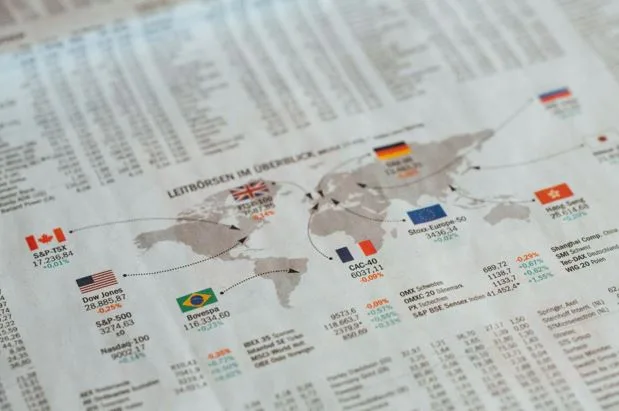Navigating Precious Metals Investments in an Uncertain Economic Climate
The financial industry looks vastly different from just a few years ago. Interest rates have fluctuated wildly, inflation concerns have reshaped consumer behavior, and geopolitical tensions continue creating market volatility. In this environment, investors are revisiting traditional safe-haven assets, particularly precious metals, with renewed interest and plenty of questions.
Gold, silver, platinum, and other precious metals have served as wealth preservation tools for thousands of years. They’ve survived the fall of empires, weathered countless economic crises, and maintained intrinsic value when paper currencies failed. But their role in modern investment portfolios has evolved significantly, and understanding how to approach these assets in today’s market requires more than just historical perspective.
Whether you’re a seasoned investor reassessing your holdings or someone considering precious metals for the first time, the decisions you make right now could significantly impact your financial security for years to come. The key isn’t just knowing what to buy, but understanding when to hold, when to sell, and how these assets fit into your broader financial strategy.
Let’s explore the current state of precious metals investing, the factors driving today’s market conditions, and the strategic thinking that separates smart portfolio management from reactive decision-making.
Understanding the Current Precious Metals Market
The precious metals market has experienced remarkable volatility over the past several years. Gold prices have tested new highs, retreated, and rallied again in response to shifting economic signals. Silver has shown even more dramatic price swings, reflecting both its investment appeal and industrial demand. Platinum and palladium have moved in response to supply chain disruptions and changing automotive industry needs.
Several interconnected factors are driving current market dynamics. Central bank policies around the world continue influencing currency values and, by extension, the relative attractiveness of gold and other metals priced in dollars. When the Federal Reserve adjusts interest rates, it doesn’t just affect borrowing costs. It changes the opportunity cost of holding non-yielding assets like precious metals versus interest-bearing investments.
Inflation expectations play an equally critical role. Precious metals traditionally serve as inflation hedges, preserving purchasing power when currency values erode. However, the relationship isn’t always straightforward. Sometimes metals prices rise in anticipation of inflation that never fully materializes. Other times, they lag behind actual price increases as investors focus on other opportunities.
Geopolitical instability adds another layer of complexity. Trade tensions, regional conflicts, and political uncertainty drive investors toward safe-haven assets. But the magnitude of this effect varies depending on how serious the threats appear and whether they’re likely to escalate or resolve.
Physical supply and demand dynamics matter too, though perhaps less than many people assume. Mining production, jewelry demand, industrial applications, and central bank purchases all influence prices. Yet these fundamental factors often take a backseat to investment flows and speculation in determining short-term price movements.
The Psychology Behind Precious Metals Investing
Understanding precious metals markets requires grasping the psychological factors that drive investor behavior. Unlike stocks or bonds, which generate cash flows and can be valued based on earnings or interest payments, precious metals have no inherent yield. Their value comes entirely from what people believe they’re worth and their historical role as stores of value.
This creates interesting market dynamics. During periods of economic confidence, investors often view precious metals as dead money, generating no returns while stocks climb and bonds pay interest. Money flows out of metals and into other assets. But when confidence wavers, that same lack of yield becomes a feature rather than a bug. Metals don’t default, don’t have earnings disappointments, and can’t go bankrupt.
Fear and greed cycle through these markets just like any other, but with unique characteristics. The fear that drives investors into gold during crises can evaporate remarkably quickly once conditions stabilize. The greed that pushes prices to extremes during bull markets can reverse just as fast when momentum traders exit positions.
Long-term holders often think about precious metals differently than traders. They’re not trying to time perfect entries and exits. They view metals as insurance against catastrophic scenarios, portfolio diversification, or wealth preservation across generations. For them, the question isn’t whether gold will outperform stocks next quarter, but whether it will protect wealth over decades.
This psychological divide creates opportunities and risks. When short-term traders dominate price action, volatility increases and prices can disconnect from underlying fundamentals. When long-term holders accumulate or distribute positions, it often signals deeper conviction about future economic conditions.
Strategic Portfolio Allocation and Rebalancing
How much precious metals exposure makes sense in a diversified portfolio? The answer varies dramatically based on individual circumstances, but most financial advisors who recommend metals at all suggest allocations between 5% and 15% of total investment assets.
The lower end of that range treats metals purely as portfolio insurance. A 5% allocation won’t make you rich if gold prices soar, but it provides some downside protection if other assets struggle. It’s enough to matter without dominating your overall returns.
Higher allocations, approaching 10-15%, reflect stronger conviction that metals will outperform or deeper concerns about risks facing other asset classes. Some investors go even higher, though this typically reflects specific circumstances like concentrated wealth in other areas, unusual risk tolerance, or philosophical views about monetary policy and currency stability.
Whatever allocation you choose, discipline around rebalancing becomes crucial. If you establish a 10% target and metals rally strongly, you might find yourself with 15% or 20% of your portfolio in precious metals. This concentration increases risk and reduces diversification benefits. Periodically selling some metals to rebalance back to your target captures gains and maintains your intended risk profile.
The reverse applies when metals underperform. If your allocation drops to 5% when you intended 10%, adding to positions buys at relatively lower prices. This systematic approach removes emotion from timing decisions and enforces the buy-low, sell-high discipline that most investors struggle to maintain.
Rebalancing forces you to regularly evaluate whether your holdings still serve their intended purpose. Markets change, your financial situation evolves, and your investment goals shift over time. What made sense five years ago might not fit your current circumstances.
Physical Metals Versus Paper Alternatives
Investors can gain precious metals exposure through various vehicles, each with distinct advantages and drawbacks. The choice between physical metals and paper alternatives significantly impacts both costs and flexibility.
Physical gold, silver, and other metals offer tangible ownership. You can hold bars or coins, store them yourself or in a secure facility, and know exactly what you own. This appeals to investors who distrust financial intermediaries or want assets they can access during severe crises. Physical metals also avoid counterparty risk since you don’t depend on any institution’s solvency.
However, physical ownership creates practical challenges. Storage costs money, whether you rent a safe deposit box or pay for professional vault services. Insurance adds another expense. Buying and selling physical metals involves spreads between purchase and sale prices, often 3-10% depending on the product and dealer. These transaction costs make frequent trading impractical.
Security presents another consideration. Storing significant quantities of precious metals at home creates obvious risks. Professional storage addresses security concerns but reintroduces counterparty risk and ongoing expenses.
Paper alternatives like exchange-traded funds (ETFs) offer easier access to metals exposure without physical ownership headaches. You can buy and sell shares instantly at tight spreads, hold them in standard brokerage accounts, and avoid storage costs. Popular gold and silver ETFs hold physical metals in vaults, providing indirect ownership with much greater liquidity.
Mining stocks and streaming companies offer leveraged exposure to metals prices. When gold rises, well-managed mining operations typically see magnified profit increases. But these investments carry company-specific risks unrelated to metals prices. Poor management, geological disappointments, or operational challenges can hurt returns even when underlying metals perform well.
Futures and options provide sophisticated tools for experienced traders but introduce complexity and risks unsuitable for most investors. These derivatives require active management and deep market knowledge to use effectively.
Timing Considerations and Market Signals
One of the most common questions investors ask about precious metals concerns timing. Should you buy now? Should you sell? Is this a good entry point or are you catching a falling knife?
The honest answer is that consistently timing any market, including precious metals, remains extremely difficult. Professional traders with sophisticated tools and decades of experience frequently get timing wrong. Retail investors trying to identify perfect entry and exit points often underperform simple buy-and-hold strategies.
That said, understanding current market conditions and your personal financial situation can inform intelligent decisions about adjusting positions. Several factors deserve consideration when evaluating whether to buy, sell, or hold precious metals.
Current prices relative to historical ranges provide context. Are metals near multi-year highs or lows? Extended rallies might suggest more limited upside potential, while depressed prices could indicate value opportunities. However, high prices can go higher and low prices can drop further, so historical ranges alone don’t determine optimal timing.
The broader economic environment matters significantly. Rising interest rates typically pressure metals prices since they increase the opportunity cost of holding non-yielding assets. Falling rates often support metals by making yield-free assets more attractive. Inflation trends, currency movements, and real interest rates all factor into this analysis.
Your personal financial circumstances should drive decisions more than market conditions. Do you need to raise cash for specific expenses? Has your metals allocation grown too large relative to your target? Has your risk tolerance changed? These personal factors often matter more than whether gold is $50 higher or lower this month.
Many investors find themselves sitting on substantial precious metals positions accumulated over years or decades. Perhaps you inherited coins from family members or bought during previous market cycles. The question of Is Now a Good Time to Sell Gold becomes increasingly relevant as prices fluctuate and your financial needs evolve. Understanding current market dynamics, tax implications, and how selling fits into your overall financial plan requires careful analysis of your specific situation.
Tax Implications and Practical Considerations
Selling precious metals triggers tax consequences that can significantly impact your net returns. In many jurisdictions, physical gold, silver, and other precious metals are classified as collectibles for tax purposes, subject to higher capital gains rates than stocks or bonds. Understanding these implications before selling helps avoid unpleasant surprises.
Long-term capital gains on collectibles often face maximum tax rates around 28% in the United States, compared to lower rates on stocks and bonds held over a year. Short-term gains face ordinary income tax rates. The specific treatment depends on how long you’ve held the metals, your overall income level, and current tax laws.
Inherited precious metals receive special treatment. Step-up in basis rules mean you’re typically only taxed on appreciation since the date of inheritance, not from when the original owner purchased the metals. This can dramatically reduce tax liability compared to selling metals you’ve held personally for decades.
Documenting your cost basis becomes crucial when selling. If you can’t prove what you originally paid, the IRS might assume a zero cost basis and tax the entire sale proceeds as gain. Keep purchase receipts, inheritance documents, and any other records establishing what you paid for metals you’re selling.
Some investors explore 1031 like-kind exchanges or other strategies to defer taxes, though recent law changes have limited options for precious metals. Consulting with a qualified tax professional before making large sales helps optimize your after-tax returns.
Alternative Precious Metals Beyond Gold
While gold dominates precious metals discussion, other metals deserve consideration for diversified exposure. Each has unique characteristics, market dynamics, and investment considerations.
Silver serves dual roles as both an industrial metal and investment asset. This creates more volatile price movements than gold, with silver often amplifying gold’s trends in both directions. Industrial demand from electronics, solar panels, and other applications provides fundamental support beyond pure investment flows. Silver’s lower price per ounce makes it more accessible for smaller investors but creates storage challenges when building significant positions.
Platinum has historically traded at premiums to gold, though this relationship has inverted in recent years. Automotive industry demand for catalytic converters drives much of platinum’s market, making it sensitive to vehicle production cycles and emission standards. Supply concentration in South Africa and Russia adds geopolitical risk factors.
Palladium experienced dramatic price appreciation when tightening emission standards increased demand for catalytic converters in gasoline vehicles. However, the shift toward electric vehicles threatens long-term demand, creating uncertainty about palladium’s investment appeal.
Rhodium, iridium, and other minor platinum group metals have industrial applications but limited investment markets. Most investors access these only through mining company stocks rather than physical holdings.
Making Informed Decisions About Your Holdings
Successfully navigating precious metals investments requires balancing multiple considerations. Market conditions, personal financial circumstances, tax implications, and long-term objectives all factor into optimal decision-making.
Start by clarifying your original investment thesis. Why did you buy precious metals initially? Were they intended as permanent portfolio diversification, speculation on price appreciation, or insurance against specific risks? Has that rationale changed? If your circumstances or market conditions have shifted significantly from when you established positions, reassessing makes sense.
Consider your current financial situation honestly. Do you have adequate emergency funds, manageable debt levels, and sufficient retirement savings? If precious metals represent a disproportionate share of your net worth while other financial priorities remain unaddressed, rebalancing might serve you better than holding indefinitely.
Look at the opportunity costs. Money in precious metals isn’t available for other investments. Could those funds better serve you in different assets? Would paying down high-interest debt or maximizing retirement account contributions create more value than maintaining current metals positions?
Don’t let emotions drive decisions. Many investors develop strong attachments to physical metals or view selling as admitting mistake. Others panic during price declines or chase rallies. Successful investing requires removing emotion and making rational decisions based on current facts and future expectations rather than past performance.
Building a Comprehensive Financial Strategy
Precious metals should fit within a broader financial strategy rather than existing in isolation. They’re one tool among many for building wealth, managing risk, and achieving financial goals.
Maximum effectiveness comes from integrating metals decisions with overall financial planning. Consider how metals allocation interacts with stock positions, bond holdings, real estate investments, and other assets. Think about how different scenarios would impact your total portfolio, not just individual components.
Regular review helps ensure your strategy remains aligned with objectives. Set specific times annually or semi-annually to evaluate your entire portfolio, including precious metals positions. Assess whether allocations match intentions, whether underlying assumptions still hold, and whether changes make sense.
Professional guidance can add value, particularly for significant holdings or complex situations. Financial advisors with fiduciary responsibilities can provide objective analysis without conflicts of interest. Tax professionals help navigate reporting requirements and optimization strategies. Legal advisors assist with estate planning considerations for substantial precious metals positions.
The most important factor is taking action based on thoughtful analysis rather than procrastination or reactive decision-making. Whether you decide to hold, buy more, or sell some positions, making intentional choices puts you in control of your financial future rather than passively accepting whatever happens.
Precious metals have protected wealth and provided financial security for countless generations. Used thoughtfully as part of a comprehensive strategy, they can continue serving those purposes. The key is understanding what you own, why you own it, and when adjustments serve your long-term interests better than maintaining the status quo. Markets will continue fluctuating, economic conditions will shift, and your personal circumstances will evolve. Staying informed, thinking strategically, and acting decisively when appropriate gives you the best chance of achieving your financial objectives regardless of what comes next.




